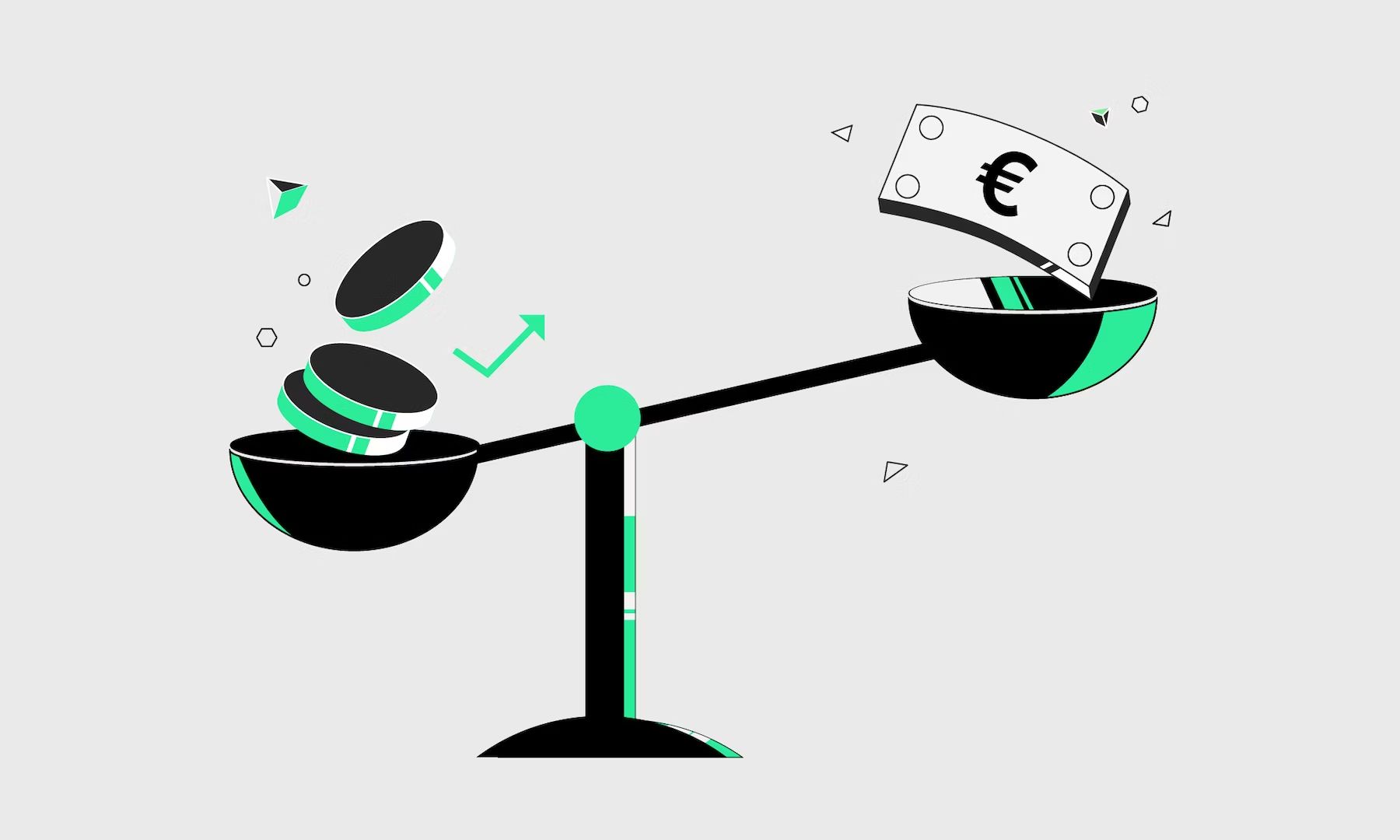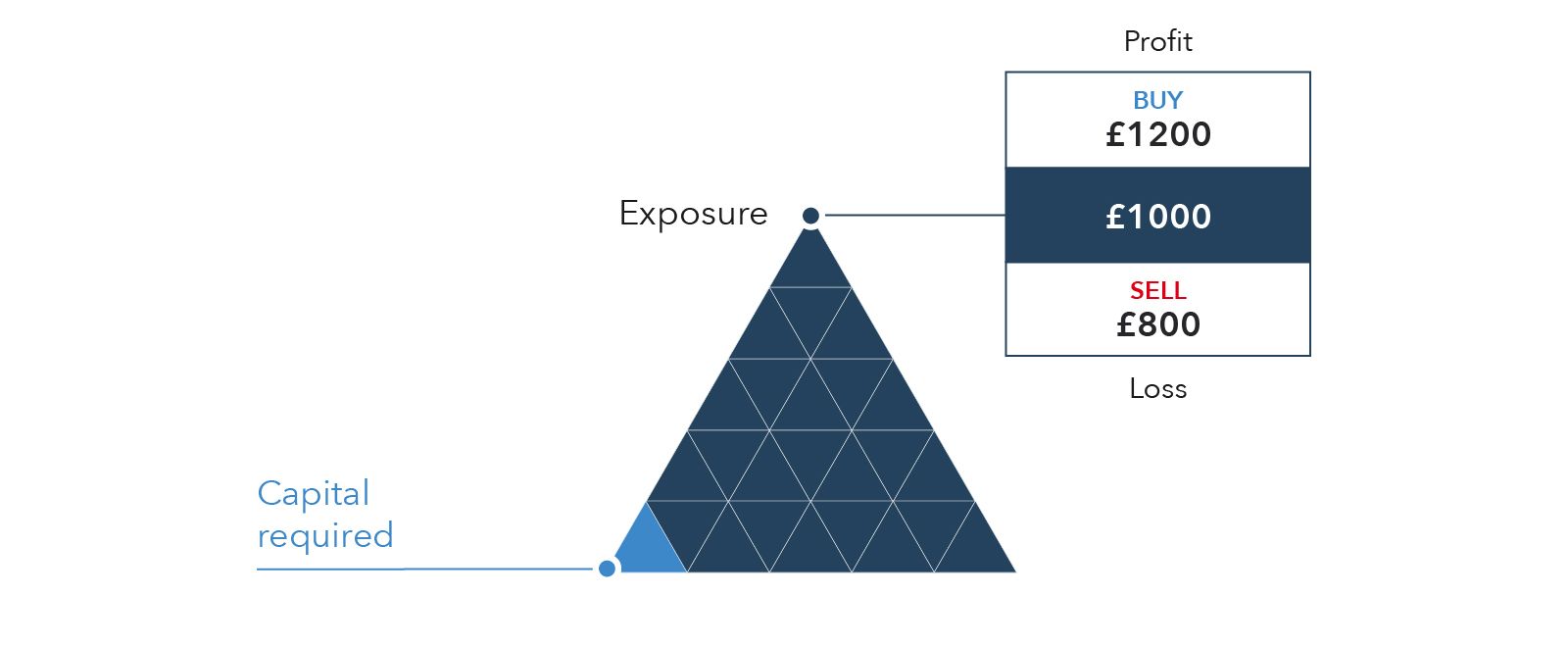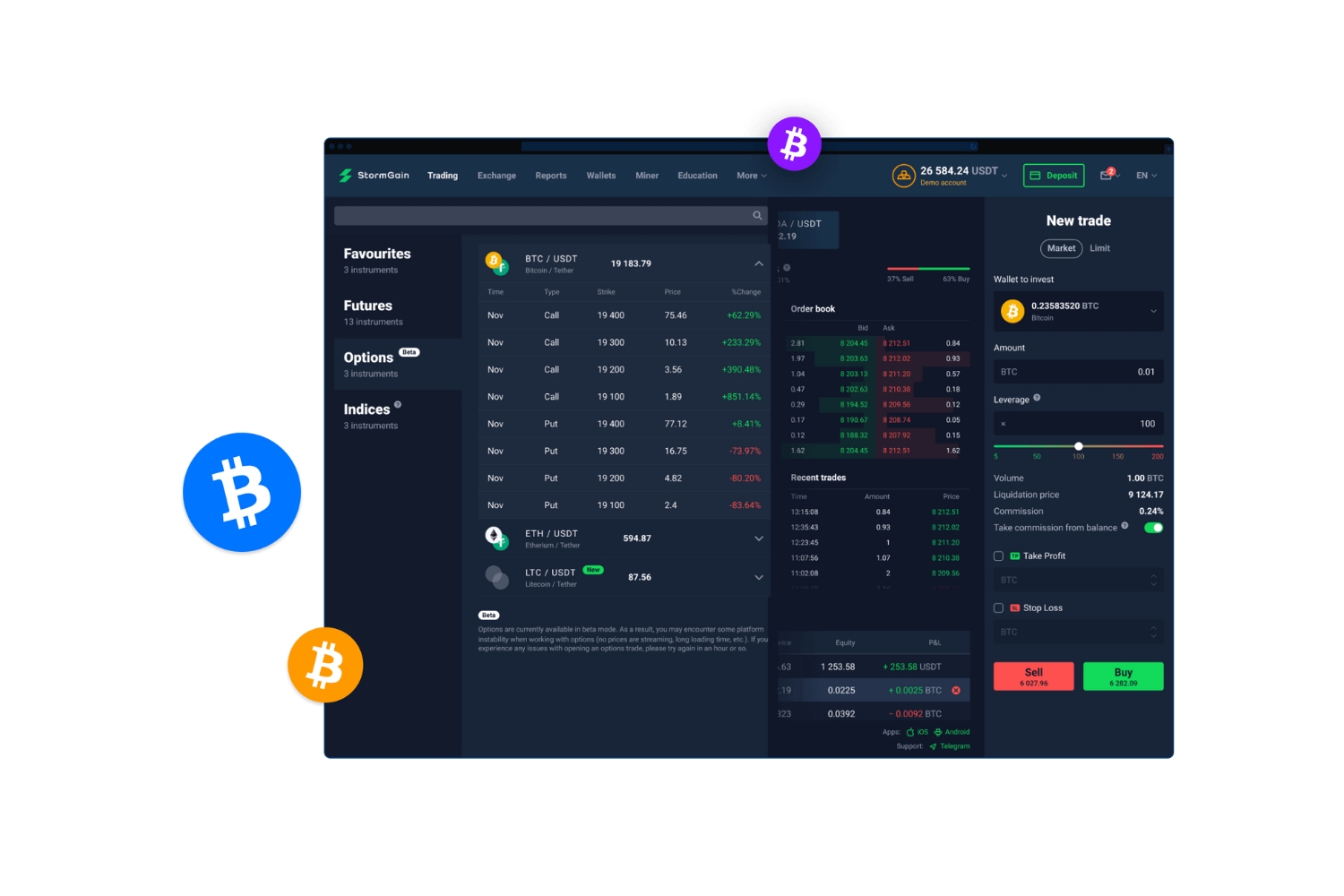Introduction
Welcome to the world of trading! Whether you’re a seasoned trader or just starting out, understanding the concept of leverage is essential. Leverage plays a crucial role in the financial markets, allowing traders to amplify their potential gains – but it also comes with its fair share of risks.
In simple terms, leverage refers to borrowing funds to amplify your trading position. It allows traders to control a larger position in the market with a relatively smaller amount of capital. This can be a powerful tool, as it increases the potential profit from successful trades. However, it’s important to note that leverage can also magnify losses, making risk management a vital aspect of trading with leverage.
While leverage is commonly used in trading, it extends beyond just the stock market. It is also utilized in forex trading, commodities trading, and other financial markets. Understanding how leverage works and its implications is crucial for any trader looking to maximize their returns.
In this article, we will delve into the depths of leverage in trading. We will explore its meaning, how it works, the advantages it offers, as well as the risks and limitations you need to be aware of. Additionally, we will provide tips on how to use leverage effectively and highlight different types of leverage commonly employed in trading. By the end, you will have a comprehensive understanding of leverage and be better equipped to navigate the world of trading with confidence.
What is Leverage?
Leverage, in trading, refers to the ability to control a larger position in the market with a smaller amount of capital. It is essentially borrowing funds to increase your trading power. When you trade with leverage, you have the ability to open a position that is larger than the amount of money you have in your trading account.
Leverage is typically expressed as a ratio, such as 1:10 or 1:100. The first number represents the amount of capital you have, while the second number represents the amount of leverage being offered. For example, with a leverage ratio of 1:10, for every $1 you have in your account, you can control $10 worth of assets.
The concept of leverage allows traders to potentially earn larger profits compared to trading without leverage. By using leverage, traders can take advantage of small price movements in the market to generate significant returns. However, it’s important to recognize that leverage can also magnify losses. While it can enhance gains, it also increases the risk of sustaining bigger losses than initially anticipated.
It’s crucial to understand that leverage is a double-edged sword. While it can increase potential profits, it also exposes traders to higher risks. Therefore, it is important to approach leverage with caution and carefully consider the potential impact on your trading strategy and risk management.
It’s worth noting that leverage is not limited to individual traders. Institutional investors, hedge funds, and other financial entities also utilize leverage to amplify their trading positions and potentially enhance their returns. Regardless of whether you’re an individual trader or a large institution, understanding how leverage works and its implications is essential to navigate the financial markets.
How Leverage Works
Understanding how leverage works is crucial before utilizing it in your trading strategy. When you trade with leverage, you are essentially borrowing funds from your broker to increase your buying power. This allows you to control a larger position in the market with a relatively smaller amount of capital.
Here’s a simplified example to illustrate how leverage works:
Let’s say you have $1,000 in your trading account and your broker offers you a leverage ratio of 1:100. With this leverage, you can control a position worth $100,000. Without leverage, you would only be able to control a $1,000 position.
It’s important to note that while leverage allows you to control a larger position, you are still responsible for any losses incurred. Your initial capital serves as a cushion to cover any potential losses. This is referred to as margin.
When you open a leveraged position, your broker will require you to deposit a certain amount of margin as collateral. The margin amount varies depending on the leverage ratio, the asset being traded, and the broker’s requirements.
As the trade moves in your favor, you can earn profits on the full value of the leveraged position. However, if the trade goes against you, losses will also be magnified. If your losses approach the margin amount, the broker may issue a margin call, requiring you to either add additional funds or close out your position to prevent further losses.
It’s essential to monitor your positions closely when trading with leverage. Proper risk management, including setting stop-loss orders and having a clear exit strategy, is crucial to protect your trading capital.
In summary, leverage allows you to amplify your trading position by borrowing funds from your broker. This enables you to control larger positions with a smaller amount of capital. However, it’s important to remember that leverage magnifies both potential profits and losses, so it’s crucial to use it wisely and implement effective risk management strategies.
Advantages of Leverage
Trading with leverage offers several advantages that can be appealing to traders seeking to maximize their potential returns. Let’s explore some of the key advantages of using leverage:
- Increased Buying Power: Leverage allows you to control larger positions in the market with a smaller amount of capital. This means you can participate in lucrative trading opportunities that would be otherwise inaccessible without leverage. It gives you the ability to potentially amplify your profits.
- Potential for Higher Returns: By controlling larger positions, leverage can magnify your gains when the price of an asset moves in your favor. Even small price movements can lead to significant profits when leverage is utilized effectively.
- Diversification Opportunities: Trading with leverage allows you to diversify your portfolio more easily. With a smaller amount of capital, you can access multiple markets and assets, spreading your risk and potentially increasing your chances of finding profitable opportunities.
- Access to More Markets: Leveraged trading provides you with access to a wide range of financial markets, such as stocks, forex, commodities, and indices. This opens up a world of investment opportunities that may not be available to traders without leverage.
- Efficient Use of Capital: By leveraging your capital, you can make your money work harder for you. Rather than tying up a large amount of capital in a single trade, leverage allows you to deploy your funds more efficiently across multiple positions, potentially increasing your overall profits.
While the advantages of leveraging your trades are enticing, it’s important to approach it with caution. It’s essential to consider the potential risks and limitations, as well as implement proper risk management strategies, to fully benefit from the advantages of leverage in trading.
Risks and Limitations of Leverage
While leverage can enhance potential profits, it also comes with significant risks and limitations. It’s important to be aware of these aspects before using leverage in your trading strategy. Let’s explore some of the key risks and limitations:
- Increased Risk of Losses: Leverage can magnify both gains and losses. If a trade moves against you, losses will be amplified, potentially leading to significant financial implications. It is crucial to have a well-defined risk management strategy in place to protect your trading capital.
- Margin Calls: When trading with leverage, you are required to maintain a certain amount of margin in your account to cover potential losses. If your losses approach this margin amount, the broker may issue a margin call, requiring you to deposit additional funds or close out your position. Failure to meet a margin call can result in the forced liquidation of your position.
- Emotional Impact: Trading with leverage can induce heightened emotions, such as fear and greed, as profits and losses are magnified. This can lead to impulsive decision-making and poor trading choices. It’s important to remain disciplined and adhere to your trading plan, regardless of leverage.
- Complexity: Leveraged trading involves a higher level of complexity compared to traditional trading. Understanding margin requirements, leverage ratios, and risk management strategies requires a solid grasp of market dynamics and trading principles. Novice traders should exercise caution and seek proper education before engaging in leveraged trading.
- Market Volatility: High levels of leverage combined with market volatility can result in significant price fluctuations and increased risk. Rapid price movements can lead to unexpected losses or trigger margin calls, making risk management even more crucial when trading with leverage.
It’s important to assess your risk tolerance and financial capabilities before utilizing leverage. Start with a cautious approach, gradually increase your leverage as you gain experience, and always be prepared for potential market fluctuations. Understanding and managing the risks and limitations of leverage is essential to protect your capital and ensure long-term success in trading.
How to Use Leverage Effectively
Using leverage effectively requires careful planning, risk management, and a solid understanding of the market. Here are some key tips to help you use leverage effectively in your trading:
- Educate Yourself: Before diving into leveraged trading, it’s crucial to educate yourself about the mechanics of leverage, margin requirements, and risk management strategies. Take the time to study the markets, learn technical analysis, and understand the factors that can impact the price of the assets you are interested in trading.
- Define Your Risk Tolerance: Assess your risk tolerance and financial capabilities before using leverage. Determine the maximum amount of capital you are comfortable risking in each trade and set appropriate stop-loss orders to limit potential losses.
- Start Small: If you are new to leveraged trading, it’s advisable to start small and gradually increase your position size as you gain experience and confidence. This allows you to become familiar with the intricacies of leveraged trading without exposing yourself to excessive risk.
- Implement Proper Risk Management: One of the key aspects of effective leverage trading is implementing sound risk management strategies. Set stop-loss orders to automatically exit trades if they move against you, and consider using trailing stops to lock in profits as the market moves in your favor.
- Diversify Your Portfolio: Rather than solely focusing on a single asset or market, diversify your portfolio. This can help spread your risk and potentially offset losses in one position with gains in others.
- Stay Informed: Keep up with the latest news, market trends, and events that can impact the assets you are trading. Stay informed about economic indicators, corporate earnings reports, and geopolitical developments that may affect the markets.
- Practice Demo Trading: Many brokers offer demo trading accounts that allow you to practice leverage trading with virtual funds. Utilize this opportunity to test your strategies, gain experience, and develop confidence before trading with real money.
By following these guidelines and continuously assessing and adjusting your trading strategy, you can effectively utilize leverage and minimize the associated risks. Remember, disciplined and informed trading is the key to successful leverage trading.
Different Types of Leverage
When it comes to trading, there are different types of leverage that traders can employ. Each type has its own characteristics and considerations. Let’s take a look at some of the common types of leverage:
- Financial Leverage: This is the most common type of leverage used in trading. It involves borrowing funds from a broker to increase the size of your trading position. Financial leverage allows you to control a larger investment with a smaller amount of capital.
- Operating Leverage: Operating leverage is commonly used in businesses to magnify returns on investments. It refers to the use of fixed costs, such as rent, salaries, and utilities, to generate higher profits when revenue increases. A company with high operating leverage will experience larger percentage changes in profits compared to changes in sales.
- Real Estate Leverage: Real estate leverage involves borrowing money to purchase a property with the expectation of earning a return on the investment. By utilizing real estate leverage, investors can control a more substantial property value with a smaller initial investment.
- Forex Leverage: Forex leverage allows traders in the foreign exchange market to control larger positions with a smaller amount of capital. The forex market offers high leverage ratios, which can amplify potential gains, but also increase the risk of losses.
- Options Leverage: Options leverage enables traders to control a substantial position in an underlying asset with a relatively small amount of capital. Options provide traders with the right, but not the obligation, to buy or sell an asset at a specified price within a certain timeframe.
- Margin Trading Leverage: Margin is a form of leverage that allows traders to borrow funds from a broker to trade larger positions. Traders are required to deposit an initial margin, which serves as collateral. Margin trading leverages your existing capital and can increase both potential profits and losses.
It’s important to understand the specific characteristics and risks associated with each type of leverage before incorporating them into your trading strategy. Proper risk management, education, and staying informed are crucial when utilizing different types of leverage to ensure you make informed trading decisions.
Examples of Leverage in Trading
Leverage plays a significant role in various trading markets, allowing traders to control larger positions with a smaller amount of capital. Here are a few examples of leverage in trading:
Stock Trading:
Let’s say you want to buy 100 shares of a company’s stock, which is currently trading at $50 per share. Without leverage, you would need $5,000 ($50 multiplied by 100) to make the trade. However, with leverage of 1:10, you could control the same position with just $500. This gives you exposure to a larger position and the potential for greater profits.
Forex Trading:
In the forex market, leverage is commonly utilized to trade currencies. For example, if you have a trading account with $1,000 and your broker offers leverage of 1:100, you can control a position worth $100,000. This allows you to participate in currency movements with a significantly smaller amount of capital.
Commodity Trading:
Commodities such as gold, oil, and natural gas also offer leverage opportunities. For instance, if you were interested in trading crude oil, a single contract might represent 1,000 barrels of oil. Without leverage, you would need the full value of those 1,000 barrels to trade. However, with leverage, you could control the same contract with a fraction of the required capital.
Margin Trading:
In margin trading, traders can borrow funds from their broker to amplify their trading positions. For example, if you have $10,000 in your account and you want to trade with a leverage ratio of 1:2, you can open a position worth $20,000. This effectively doubles your exposure to the market, potentially increasing both profits and losses.
It’s important to remember that while leverage can amplify potential gains, it also increases the risk of losses. Proper risk management and disciplined trading are essential when utilizing leverage in any market.
These examples demonstrate how leverage allows traders to control larger positions and potentially generate greater profits. However, it is crucial to approach leverage with caution and to consider the associated risks before engaging in leveraged trading.
Conclusion
Leverage is a powerful tool that can significantly impact your trading strategy and potential returns. By borrowing funds to control larger positions, traders have the opportunity to amplify their profits and access markets that would otherwise be out of reach. However, it is important to remember that leverage comes with its fair share of risks and limitations.
Understanding the concept of leverage is essential for any trader looking to navigate the financial markets effectively. It is crucial to educate oneself about different types of leverage, risk management strategies, and market dynamics. Implementing proper risk management techniques, setting stop-loss orders, and diversifying your portfolio can help mitigate the risks associated with leverage.
Remember, leverage is a double-edged sword. While it can magnify potential gains, it also amplifies losses. Emotions can play a significant role when trading with leverage, making discipline and a clear trading plan essential. Continuously staying informed about market trends, economic indicators, and geopolitical events can help you make informed trading decisions.
In conclusion, leverage can be a valuable tool for traders, offering increased buying power, potential for higher returns, and diversification opportunities. However, it should be approached with caution and used in conjunction with proper risk management strategies. As with any trading decision, thorough research, education, and discipline are essential to maximize the benefits of leverage and minimize its risks.

























